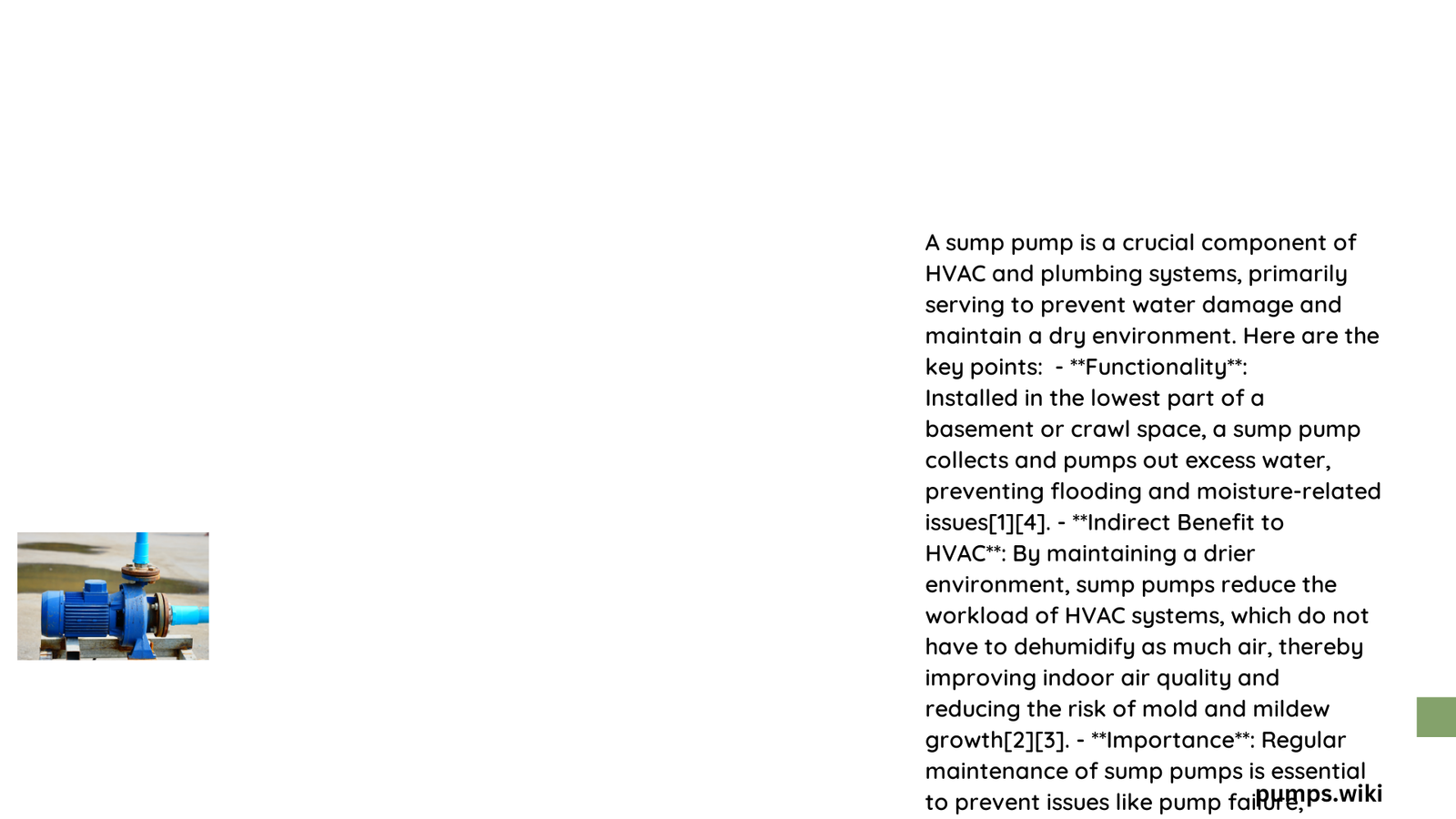A sump pump represents a critical water management solution that indirectly supports HVAC and plumbing systems by preventing moisture accumulation, reducing humidity, and protecting home infrastructure from potential water damage. While not directly integrated with HVAC equipment, these systems play a crucial role in maintaining indoor environmental quality and preventing structural complications that could impact heating, cooling, and ventilation performance.
What Connects Sump Pumps to HVAC and Plumbing Systems?
Sump pumps serve as a fundamental moisture control mechanism that intersects with broader home environmental management strategies. Their primary function extends beyond simple water removal, creating a comprehensive approach to maintaining healthy indoor spaces.
Core Functional Relationships
| System | Interaction | Impact |
|---|---|---|
| HVAC | Humidity Control | Reduces system strain |
| Plumbing | Water Redirection | Prevents structural damage |
| Home Infrastructure | Moisture Management | Prevents mold and deterioration |
Why Sump Pumps Matter in Home Systems
Sump pumps provide critical benefits that directly influence home comfort and system efficiency:
- Moisture Reduction
- Eliminates excess water from basement and crawl spaces
- Prevents humidity-related HVAC performance issues
-
Protects against potential mold growth
-
Structural Protection
- Redirects water away from foundation
- Prevents potential water damage to plumbing infrastructure
- Maintains structural integrity of home systems
How Do Sump Pumps Operate?

Sump pumps function through a sophisticated yet straightforward mechanism:
- Water Collection: A designated pit collects groundwater and runoff
- Sensor Activation: Float switch detects water level
- Automatic Pumping: Electrical pump activates and redirects water
- Discharge: Water moved away from home’s foundation
Technical Specifications to Consider
When selecting a sump pump for HVAC and plumbing integration, evaluate:
- Pumping capacity (gallons per minute)
- Power source requirements
- Discharge pipe diameter
- Float switch sensitivity
- Material durability
What Professional Installation Involves?
Professional sump pump installation requires:
- Precise foundation excavation
- Proper pit dimensioning
- Electrical connection
- Discharge line configuration
- Compliance with local building codes
Estimated Installation Costs
| Pump Type | Average Cost | Complexity |
|---|---|---|
| Submersible | $500 – $1,000 | Moderate |
| Pedestal | $300 – $600 | Low |
| Battery Backup | $200 – $500 | Additional |
What Maintenance Strategies Protect Your System?
Regular maintenance ensures optimal sump pump performance:
- Quarterly pit cleaning
- Annual professional inspection
- Battery backup system checks
- Discharge line evaluation
- Electrical connection verification
Potential Risks of Neglect
Ignoring sump pump maintenance can lead to:
– Water damage
– Mold proliferation
– HVAC system inefficiency
– Structural compromise
– Increased repair costs
Conclusion
Sump pumps represent a critical component in comprehensive home water management, offering indirect yet significant support to HVAC and plumbing systems. By understanding their function, installation, and maintenance, homeowners can protect their property and ensure long-term system reliability.
Reference:
– EPA Water Management Guidelines
– HVAC Maintenance Resources
– Plumbing Professional Association
